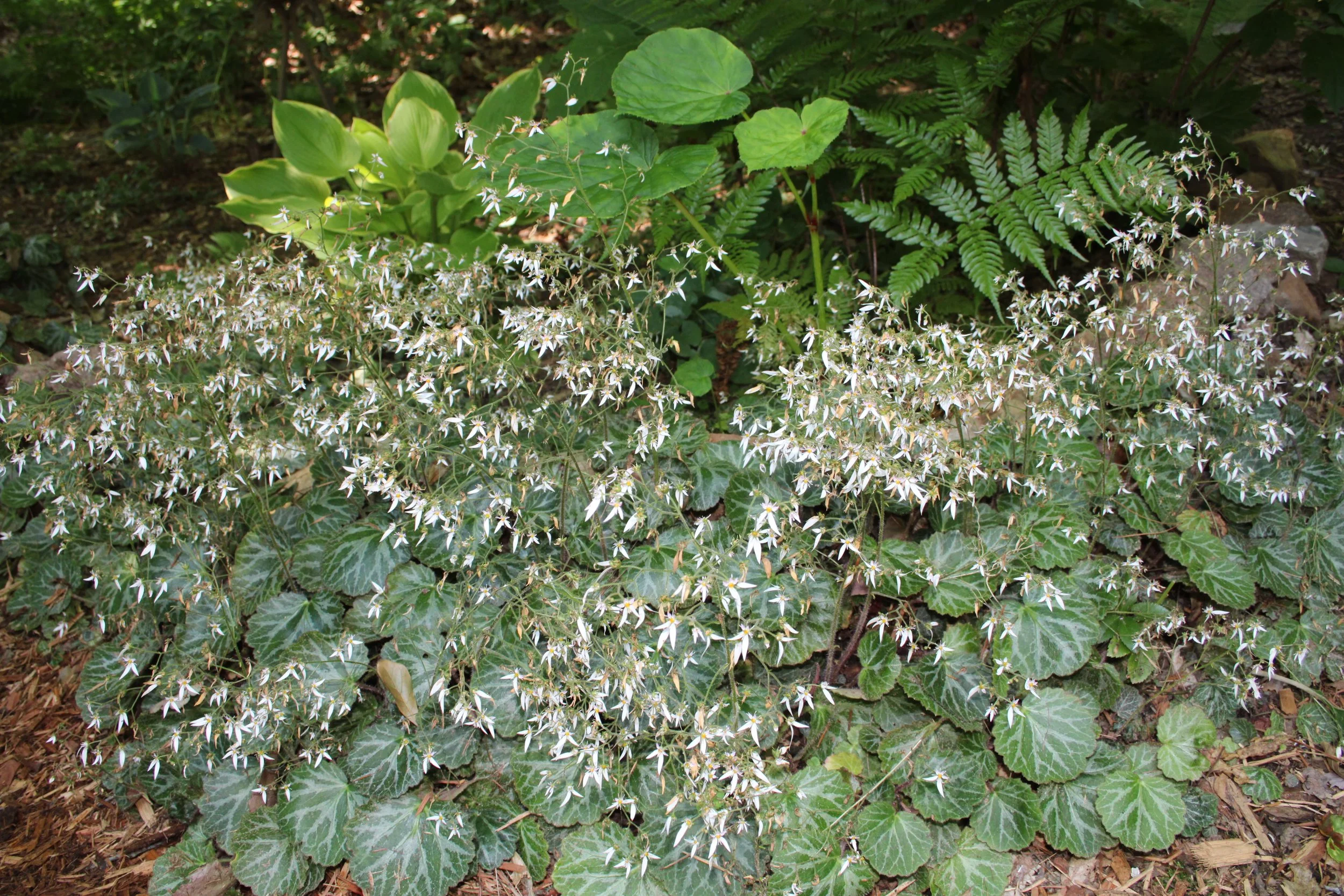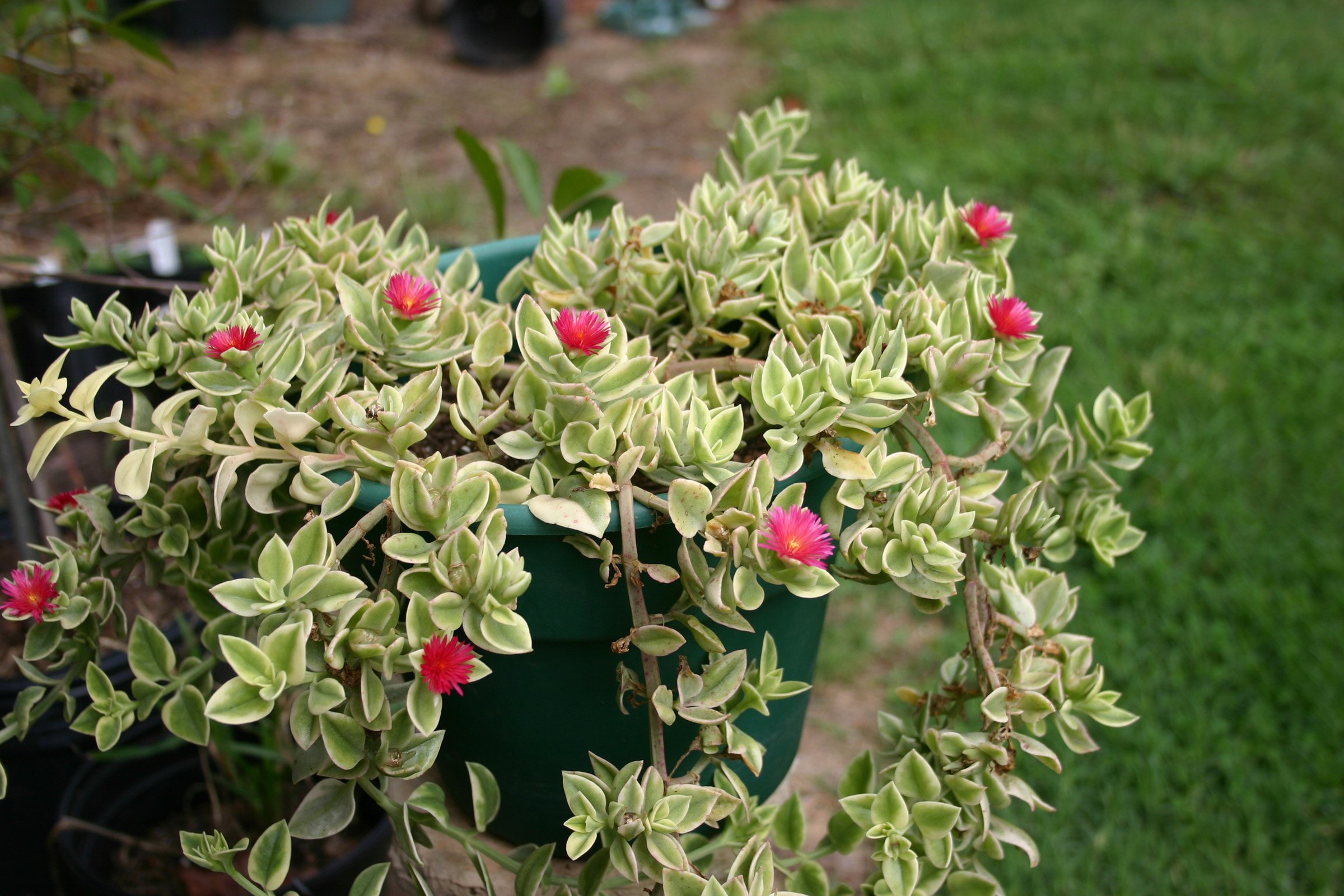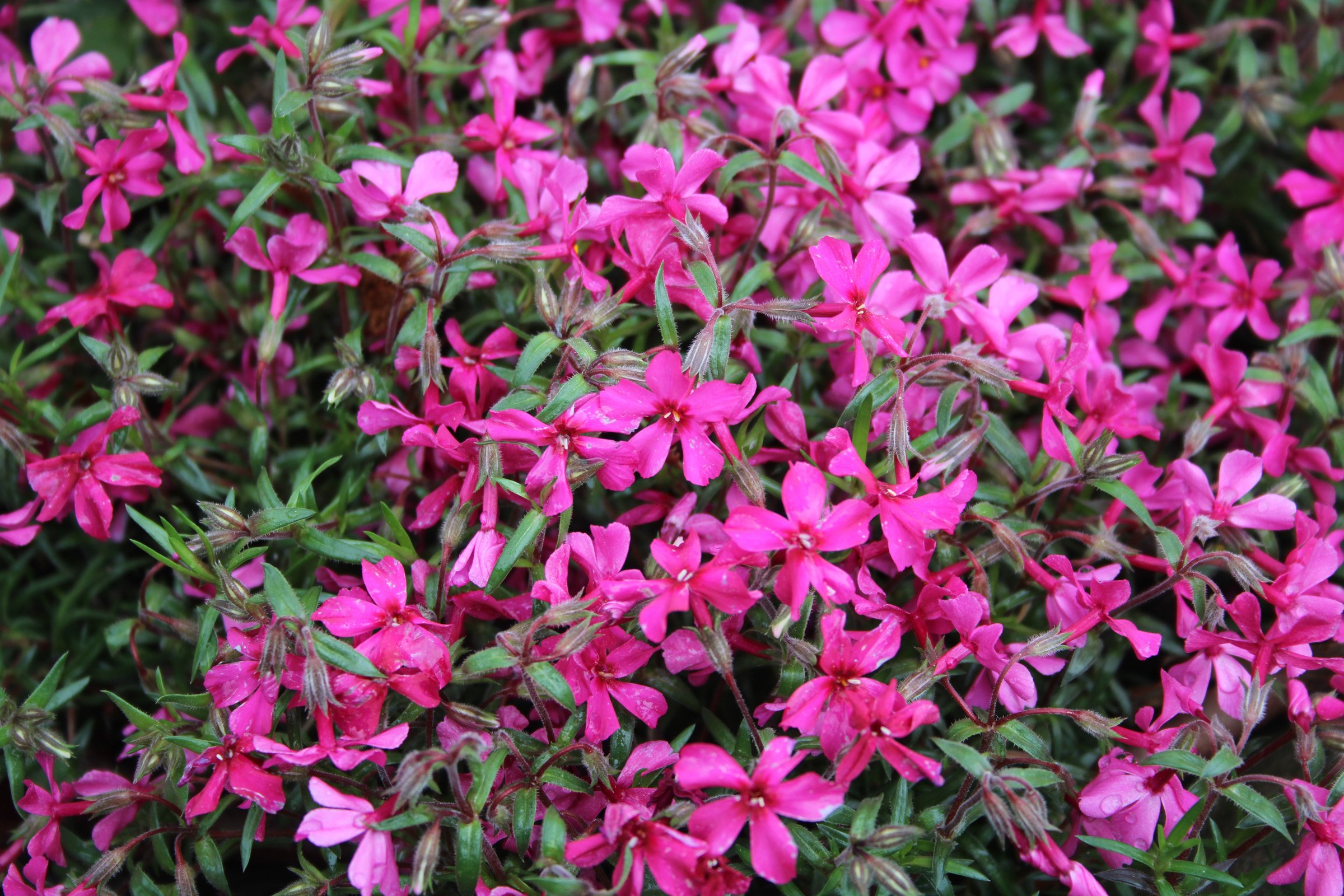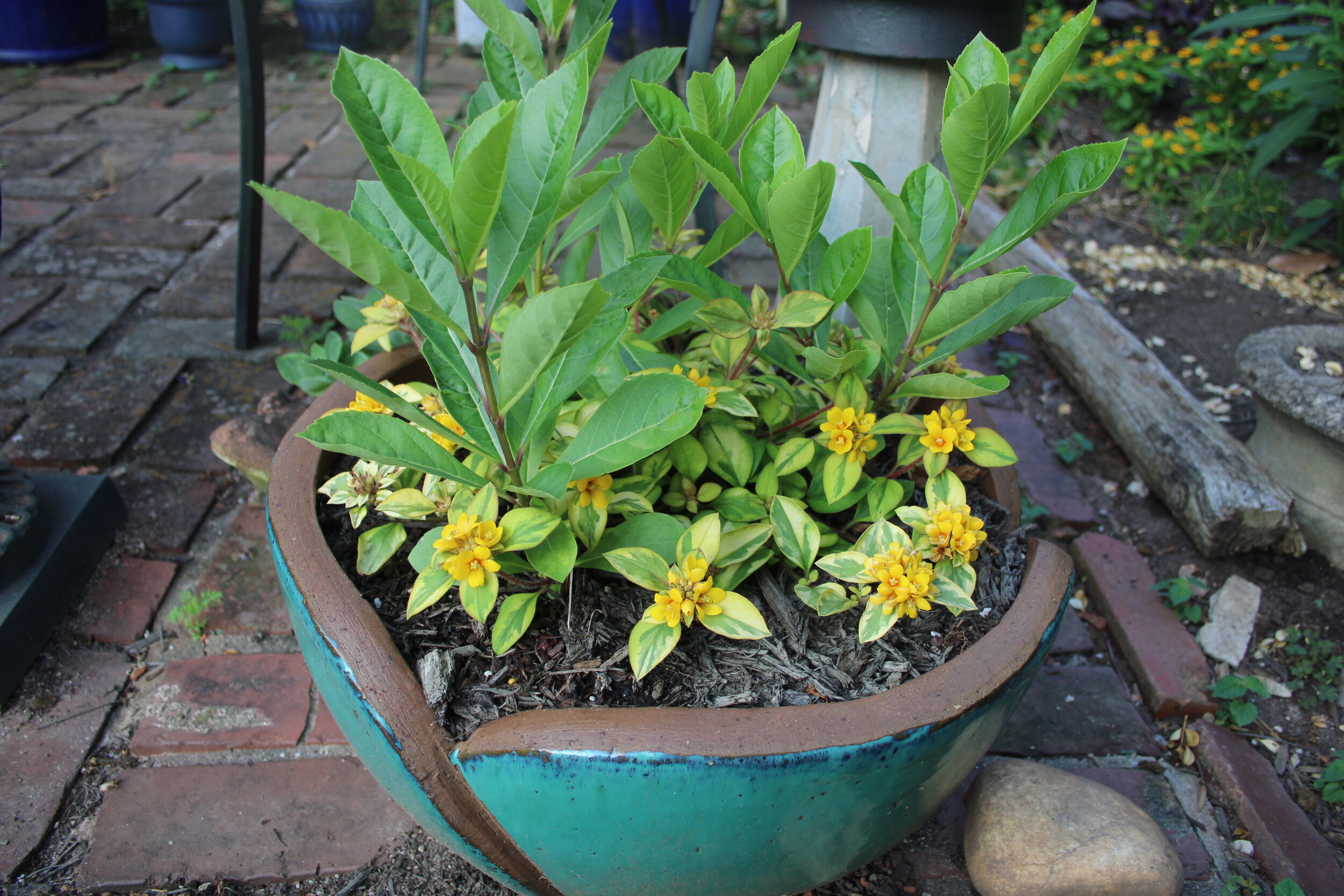Strawberry Begonia plant is not a strawberry and is not a begonia. Instead, this shade-loving groundcover is Saxifraga stolonifera, pronounced SAK·suh·fra·guh stoh-lon-NIF-er-rah. The species name, stolonifera, gives a strong indicator of its growth habit. It spreads by strawberry-like runners, above-ground stolons with tips that sprout roots and develop into new plants. Strawberry Begonia can spread itself into a clump of two feet or so, but this native of China and Japan is not considered invasive. It is an excellent alternative to Ajuga, which spreads aggressively.
When not in flower, plants are only six to eight inches tall. The white flowers are held on thin stems that may rise up to 16 inches. The flowers are not unattractive (see photo) but this plant is grown for its rounded leaves marked with white or silver veins. The leaves make one think of Cyclamen or African Violet.
I prefer the straight species, but there are several cultivars of Strawberry Begonia that offer special features. I was able to find variegated ‘Tri-color’ in the market, but so far have not been successful in finding golden-leaved ‘Harvest Moon’ or blushed ‘Maroon Beauty.’ While I was plant shopping online, I learned that many nursery sources use the common name Strawberry Geranium. I also found that this is just one member of a huge family, Saxifragaceae.
Strawberry Begonia is perennial and evergreen to semi-evergreen in zones 6-10. It will need some extra protection in the cooler parts of zone 6. It demands full shade or mostly shade. It is not selective as to soil pH or texture, but it does need a bit of extra irrigation during extended dry weather to look its best. It is rarely troubled by pests or diseases.
Strawberry Begonia can be grown outdoors in a hanging basket or indoors as a houseplant. If you choose the houseplant route, place it in an area with bright, indirect light. A tiny bit of direct sun can produce a pink tint in the leaves, but use care to avoid too much or too intense sun exposure.
Strawberry Begonia, Saxifraga stolonifera, grows in this shady bed along with Hosta, Begonia grandis, and ferns.
This tiny Strawberry Begonia experienced an unintended separation from the mother plant (clumsy gardener) so it has moved to a small container in the greenhouse, where it is in training to become a houseplant.





























